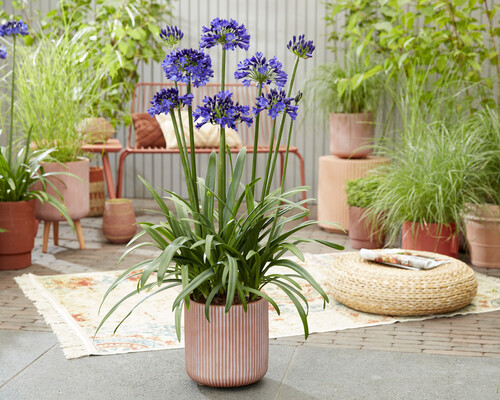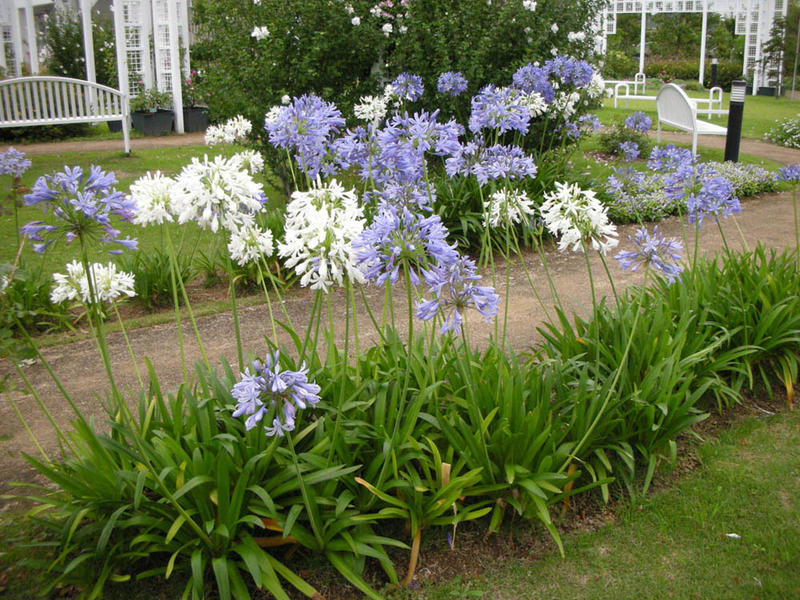Agapanthus Expanding Problems: Dirt, Sunlight, and Watering
Agapanthus Expanding Problems: Dirt, Sunlight, and Watering
Blog Article
Unlocking the Mysteries of Agapanthus: A Comprehensive Exploration of Varieties, Growing Methods, and Upkeep Practices

Agapanthus, commonly shrouded in mystery as a result of its varied variety of selections and intricate upkeep demands, emerges as an enigmatic subject for several garden enthusiasts. With a plethora of cultivars offered, each boasting distinct characteristics and development behaviors, recognizing the intricacies of these plants can be both challenging and fulfilling. As we check out the subtleties of planting strategies and explore the important upkeep methods necessary to support these stunning blossoms, a globe of possibilities unfolds for those looking for to master the art of growing agapanthus.
Agapanthus Varieties Demystified
Agapanthus ranges display a diverse series of qualities, making it crucial for gardeners to comprehend the differences in between them for successful cultivation. Among one of the most preferred variations is the Agapanthus africanus, typically called the African Lily. This selection is prized for its striking blue or white blossoms and its capacity to thrive in both containers and garden beds. The Agapanthus praecox, or Blue Lily of the Nile, is one more preferred alternative, flaunting large spherical clusters of blue or white flowers atop tall stalks.
For those seeking a much more portable alternative, the Agapanthus 'Peter Frying Pan' is an appropriate selection, with its smaller stature and delicate blue blooms. On the other hand, the Agapanthus 'Storm Cloud' variety provides a remarkable style with its deep purple flowers and dark foliage (Agapanthus). Additionally, the Agapanthus 'Albus' stands out for its pure white blooms, developing a spectacular comparison in any type of garden setting
Comprehending these distinctions can help garden enthusiasts choose one of the most suitable Agapanthus variety for their details demands and preferences, ensuring a vibrant and prospering yard screen.
Growing Agapanthus Like a Pro
When growing Agapanthus for optimal development and visual influence, careful attention to dirt high quality and sunlight direct exposure is vital. Agapanthus grows in well-draining dirt with a slightly acidic to neutral pH degree. Before planting, change compacted or heavy dirt with raw material such as compost to enhance water drainage and fertility. Choose a growing place that receives complete sunlight to partial color, as Agapanthus generally favors at least 6 hours of sunshine daily for durable flowering. When growing, make sure the crown of the plant sits at dirt level to avoid rot and encourage healthy development.

Vital Upkeep Tips for Agapanthus
To make certain the ongoing wellness and vitality of your Agapanthus plants, what trick maintenance methods should be focused on throughout the expanding season? Agapanthus plants choose equally wet dirt however can tolerate short durations of drought as soon as developed. Agapanthus plants profit from division every few years to stop congestion, enhance flowering, and revitalize the plant.
Troubleshooting Common Agapanthus Issues
Recognizing and quickly addressing common problems that may influence the health of your Agapanthus plants you could try this out is crucial for maintaining their vigor and elegance. Ensure your Agapanthus get enough sunlight, ideally around 6-8 hours per day. By being cautious and attending to these common problems without delay, you can help your Agapanthus prosper and prosper in your garden.
Making The Most Of Agapanthus Blooms: Expert Methods
Enhancing the vibrancy and wealth of Agapanthus blossoms calls for a tactical technique that utilizes optimum growing problems and expert methods. To make the most of Agapanthus flowers, begin with picking the appropriate selection for your area and wanted aesthetic. Agapanthus ranges vary in elevation, bloom color, and blossom time, so choose one that fits your yard's requirements.
Appropriate planting is vital for robust flowering. Plant Agapanthus in well-draining soil with ample sunlight direct exposure. Ensure the soil is abundant in nutrients and natural matter to support healthy development and respected blooming. Normal watering, specifically throughout the energetic expanding season, is important to protect against tension and motivate growing.
Feed Agapanthus with a well balanced fertilizer to promote flowering. Deadheading spent blooms can reroute the plant's energy right into producing new flowers (Agapanthus). Divide overcrowded clumps every few years to rejuvenate the plant and boost flowering
Lastly, shield Agapanthus from bugs and diseases that can hinder flowering. Carrying out these professional methods will certainly assist you accomplish a magnificent screen of Agapanthus blooms in your yard.
Verdict
In final thought, the enigmas of agapanthus have actually been unveiled with a comprehensive expedition of ranges, planting techniques, and maintenance methods. By troubleshooting typical problems and applying expert techniques, one can optimize agapanthus flowers and develop a spectacular yard display.

When growing Agapanthus for ideal development and aesthetic effect, careful interest to soil quality and sunlight exposure is vital.To plant Agapanthus like a pro, area the plants view website according to their fully grown dimension to allow for appropriate air circulation and stop congestion. Agapanthus plants benefit from division every couple of years to protect against congestion, improve flowering, and revitalize the plant.In go to my site verdict, the secrets of agapanthus have actually been unveiled with a thorough exploration of ranges, growing methods, and maintenance practices.
Report this page